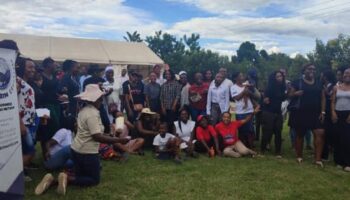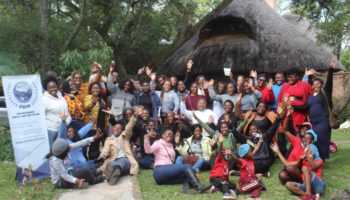Crowdfarming presents Africa with a lot of opportunities in agriculture. The concept is gaining momentum across the continent especially in Nigera, South Africa and Kenya. The concept involves a lot of people pooling resources and investing in identified projects of common interest. Mot of the people(crowd) usually meet online through digital platforms and follow the following steps;
- Formation of a company or association
- Election of leaders or a management body
- Identifying farming opportunities lease of agreement
- Identifying land and obtaining
- Carrying out detailed investment appraisals
- Contributing funds for projects with a positive net present value
- Project management and monitoring progress
- Sharing of profits or losses
Investing in the first project
Members should not try and invest huge sums of money in a project they are doing for the first time because they do not have experience in running a crowdfarming project. Invest large sums, the project fails and this will be the end of it. A short project with a short life span is highly recommended. Try a project with a maximum capital injection of US$2,000 –showcase you ability to manage the project, showcase your ability manage ad get a positive return on investment. This is the litmus test and if it fails…exit the project.
Success factors
- Be wary of unnecessary personality clashes. This can be easily dealt with if there is a constitution
- Engage a consultant to draft corporate governance documents such as constitutions or company registrations.
- If more than 10, an association registration is highly recommended-it’s faster than registering a company.
- Initial funds contributions should go towards the hire of consultants who should prepare documents or registrations within a specified period. Failure to meet deadines should attract penalties or rehire of consultants.
- The longer the registration process takes, the more many will lose interest. The founders of a crowdfarming project should already have draft documents of vision and corporate governance before inviting others.
- Land tenure is tricky especially when there is no documentation. This needs to be secured as fast as possible before commencement. The location of the farm or plot should be close to where members are based.
- Who will be the project manager? Allocating roles to several members is fine but be wary of lack of progress due to no one being accountable for results. This can delay the project or lead to some using own resources. Agree on a contribution that will help motivate the project manager who will report to the management committee. If you can afford a full time manager, the better.
- In all farming ventures, engage experts especially Agronomists. Pay them for researches and advice to reduce risks.
- Communication can be a huge challenge. Reliance of online platforms can take lead to a lot of miscommunication issues. Speak less on Whatsapp groups and arrange for more face to face meetings on a scheduled basis.
- The diaspora highly recommended not to invest funds in less established crowdfarming ventures. Crowdfarming ventures with no experience are high risk-wait and see results first before pouring funds into a new project.
Members Contributions
The concept of crowdfarming is to recruit as many members as possible. Every dollar counts!
If members are leaving the project-this is contrary to the spirit of crowdfarming. Therefore identify several projects and let members choose projects of their interest. At first choose a mix of projects such as animal husbandry and crop farming . For instance broiler rearing, rabbits rearing and crops such as vegetables or maize,
Manage the different interests of members. Some can contribute US$5 per month and some US$100 per month. Identify projects where the lower end and the high end can all fit. If its cattle purchase a cow can have 10 people with each person having a different contribution.
For example 5 people can contribute $400 as follows;
- John $100
- Jane $50
- Peter $30
- Mary $120
- Kenneth $100
Profit or losses shared as per individual contribution. This approach ensures the participation of many but is administratively more challenging.
Another option is to have each person buying a cow but the high contributions mean few people will partake in such ventures. The fewer the people, the lesser the effectiveness of crowdfarming.
History to date of crowdfarming in Zimbabwe
A maize farming project in Banket was a disaster. A lot of funds totalling US$100,000 were lost due to funds misappropriation and poor management. UK Diasporans were the biggest losers with some losing up to GBP10.000. Crowdfarming can be a cheap access to funds for fraudsters. Be wary of some who benefit by purchase of inputs and storage. Chibage chakazodyiwa nemombe! A recent case of cattle poisoning is raising question marks on possible funds misuse.
In Manicaland, another crowdfarming project resulted in heavy losses for members. Its important for members to tighten risk management. Come up with budgets in USD but contribute funds when needed, avoid large sums of money being handled by individuals. For instance, if buying fertilisers, contribute funds and purchase them on the same day. Utilise the fertiliser on the same day and avoid storage risks.
Opportunities abound in this multimillion dollar industry but the KEY WORD is transparency! Go for short term projects, give investors their returns back, let them choose to continue and gradually the project will gain prominence and many others will join.
We expect more than a thousand companies to emerge in the coming years. They will be competing to recruit members as well as to showcase who is the most profitable. Who can return the highest per dollar investment?
In Nigeria, their Reserve Bank had to intervene after a lot of financial scandals. Give us feedback on your experience with crowdfarming to date.
Local financial institutions should innovate and come up with schemes that help in crowdfarming. Enabling members to contribute funds and ensuring safe keeping. In South Africa they have facilities for Stokvel initiatives and at the end of 2019, a total of R50 Billion was held in all Stokvel accounts.
![]()





